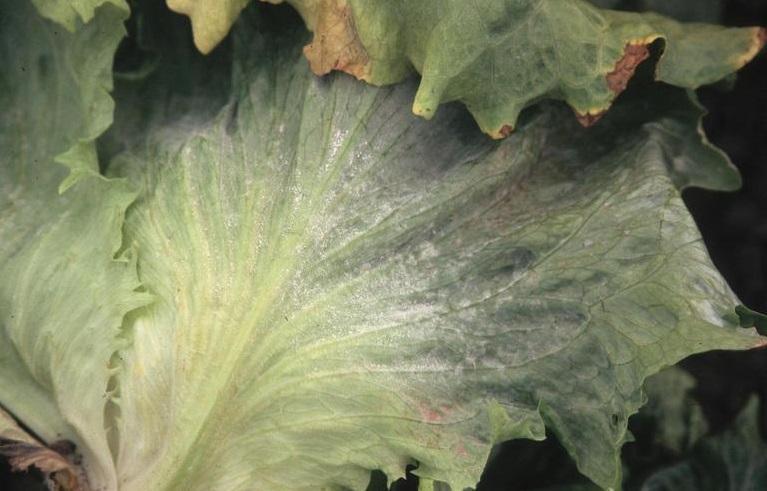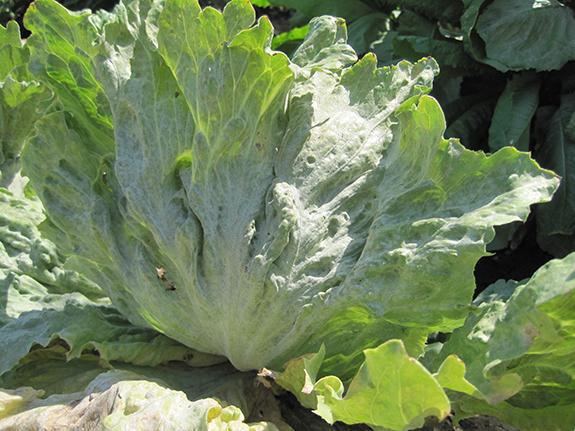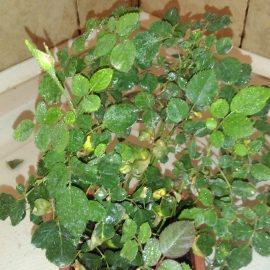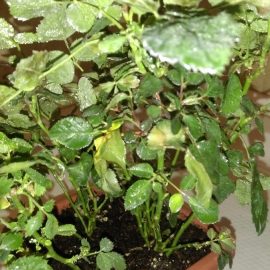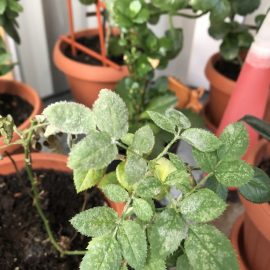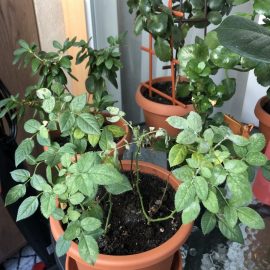Lettuce powdery mildew (Erysiphe cichoracearum) – identify and control
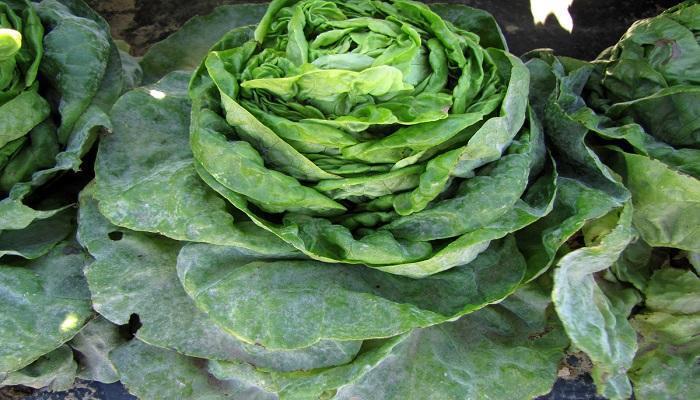
Lettuce powdery mildew, Erysiphe cichoracearum was first discovered in the USA in 1931. It is favored by warm, dry conditions and occurs primarily on mature lettuce.
Symptoms. The powdery mildew on lettuce manifests on the upper face of the leaves, as a gray-white, powdery growth. The leaves turn yellow, lose their color, and wilt. Sometimes the small, brown spherical structures of the pathogen (cleistothecia) may be seen on the leaves.
The pathogen agent is Erysiphe cichoracearum. The fungus attacks the lettuce in conditions of high humidity 77-85%, low light, and temperatures of 10-32°C. The fungus is spread by spores. The transmission from one year to another takes place through the cleistothecium (resistance fructifications) left on the vegetal debris.
Prevention and control. To prevent the appearance of the fungus, it is recommended to apply a normal watering regime, ensure aeration of the crop, as well as cultivate healthy seeds. To control the disease during the growing season, treatments with specific fungicides are applied.
Recommended products
-
You can find products on a different store
Change Store -
You can find products on a different store
Change Store -
You can find products on a different store
Change Store -
You can find products on a different store
Change Store -
You can find products on a different store
Change Store -
You can find products on a different store
Change Store -
You can find products on a different store
Change Store -
You can find products on a different store
Change Store -
You can find products on a different store
Change Store -
You can find products on a different store
Change Store -
You can find products on a different store
Change Store -
You can find products on a different store
Change Store -
You can find products on a different store
Change Store -
You can find products on a different store
Change Store -
You can find products on a different store
Change Store -
You can find products on a different store
Change Store -
You can find products on a different store
Change Store -
You can find products on a different store
Change Store -
You can find products on a different store
Change Store -
You can find products on a different store
Change Store -
You can find products on a different store
Change Store -
You can find products on a different store
Change Store -
You can find products on a different store
Change Store -
You can find products on a different store
Change Store














































































































































































































































































































































































































































